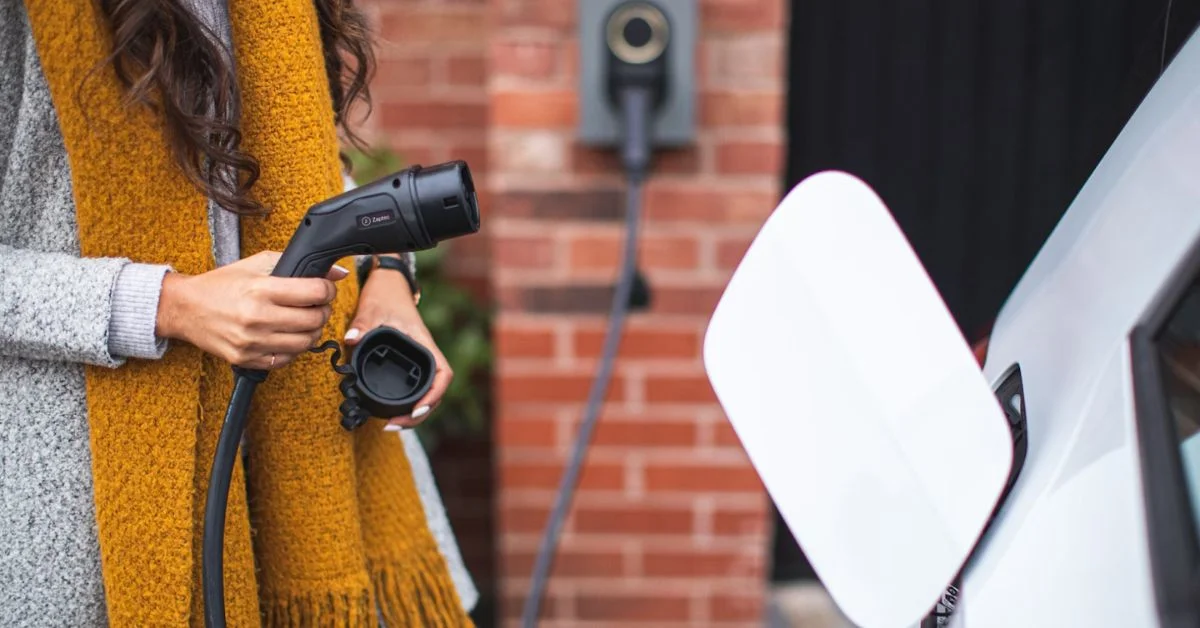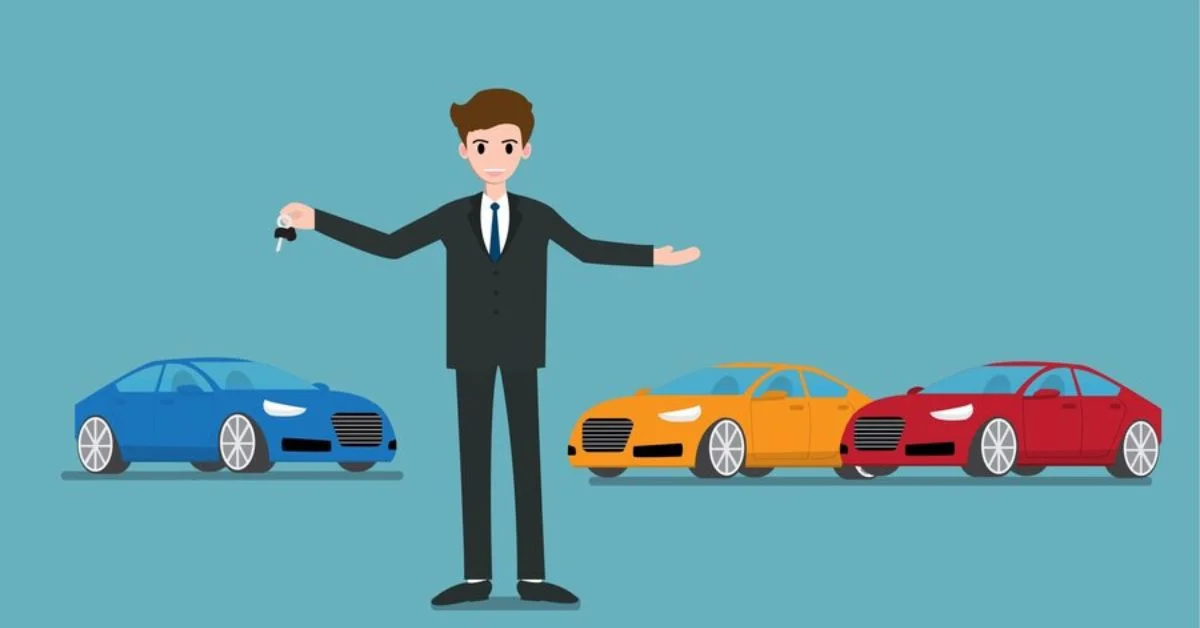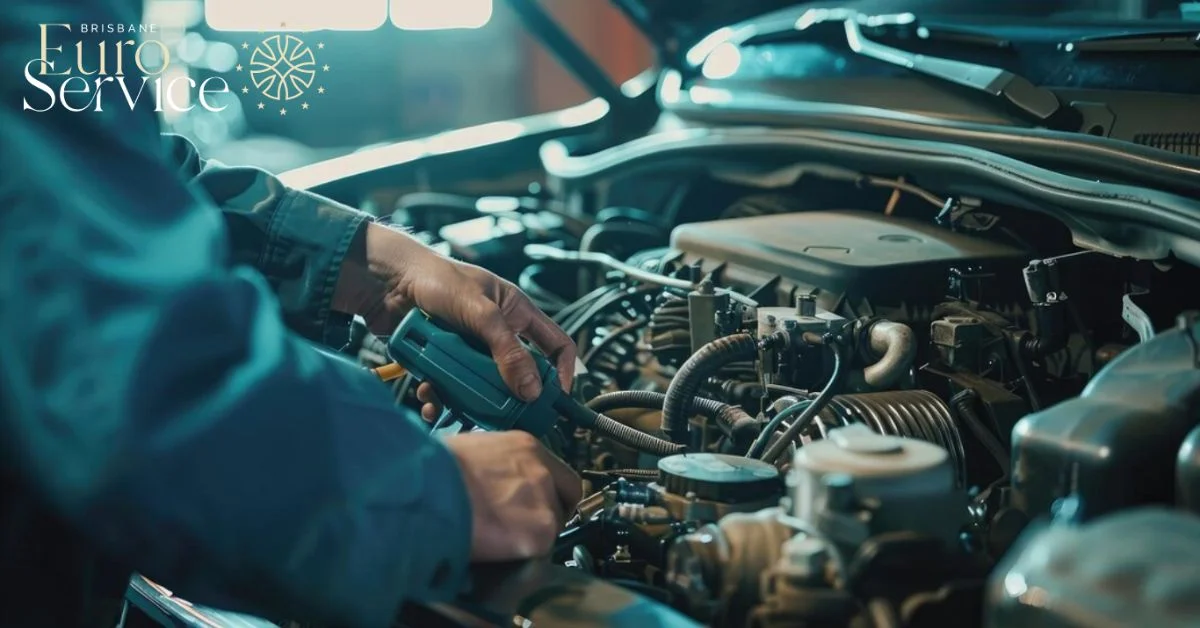AUTOMOTIVE
Skipping Gears: A Balancing Act for Engine and Driver

Introduction
Gear shifting can seem like a delicate ballet to people who switched from automatic to manual gearboxes. There’s a learning curve involving clutch control, throttle dexterity, and determining which gear is best in each given circumstance. The effect of shifting gears while driving is one subject that is frequently asked.
Skipping gears may initially appear to be a shortcut, a quicker method to go from point A to point B. But is it wise to do so? This blog explores the topic of gear skipping and how it affects the drivetrain, engine, and overall driving experience of your car.
Knowing gearing: The power band of the engine
Prior to shifting gears, let’s establish some basic comprehension. An automobile’s gearbox functions similarly to a variable speed changer, enabling the engine to deliver power effectively at varying driving speeds. The relationship between engine RPM (revolutions per minute) and wheel rotation speed is changed by the particular ratios of each gear.
Consider the engine as a power plant with a sweet spot where it produces maximum power and fuel economy. It’s common to refer to this sweet area as the “power band.” For smooth acceleration and effective operation, gears are selected to maintain the engine’s RPM within this power band.
Upshifting vs. downshifting when skipping gears
Whether you’re downshifting (going to a lower gear) or upshifting (going to a higher gear) determines how skipping gears will affect you. Let’s investigate each situation:
- Upshifting: Generally speaking, the engine and drivetrain aren’t as damaged when shifting up (from, say, second to fourth) without changing gears. But because there’s a bigger gap to bridge between the engine’s RPM and the vehicle’s speed, it can result in a jarring ride. Furthermore, if it’s not done smoothly, the clutch may have to work harder to synchronize the engine and transmission speeds.
- Downshifting: This is the point at which it’s riskier to skip a gear. Imagine driving at highway speeds and dropping from fifth to second gear. The engine would likely bog down or perhaps stall as a result of the sharp drop in engine RPM. Furthermore, downshifting can put a great deal of stress on the drivetrain’s components, increasing wear and tear, if correct rev-matching—adjusting engine RPM to match the lower gear—is not done. In severe cases, drivetrain damage may result from it.
The rev-matching art: A talent worth developing
Rev-matching is a method usually utilized by experienced manual gearbox drivers to achieve seamless downshifting. Before engaging the lower gear, blip the throttle, or briefly press and release the gas pedal, to get the engine RPM closer to what is anticipated for that gear. This lessens the shock felt during a significant gear drop and facilitates a smoother transition.
While rev-matching isn’t necessarily required for everyday driving, it becomes important when driving in performance-oriented scenarios or while making a sudden turn or other fast deceleration. By perfecting this method, you can prevent needless wear and tear on your car’s drivetrain while also improving the driving experience.
The effect on engine performance
The performance of an engine can be subtly affected by shifting gears. How to do it is as follows:
- Fuel Economy: To get the best fuel economy, gears should ideally be selected to keep the engine operating within its powerband. The engine can be forced out of this sweet spot by skipping gears, which could result in decreased fuel efficiency.
- Engine Wear: Engine parts like bearings and synchronizers may experience higher wear as a result of frequent rapid gear changes or incorrect downshifting. This can therefore result in the requirement for early maintenance.
When is it okay to switch gears?
In certain rare circumstances, skipping gear could be permissible. For instance, skipping gear during upshifting may be suitable if you need to gain speed quickly when merging onto a highway (as long as it’s done smoothly). But this shouldn’t turn into a daily routine.
For maximum engine performance, fuel economy, and the least amount of wear and tear, the general best course of action is to concentrate on smooth, methodical gear changes that maintain the engine inside its powerband.
Safety factors: Preserving mastery
Skipping gears can have an impact on safety in addition to its mechanical consequences. Your concentration and ability to operate the car may be momentarily impaired by a sudden or abrupt shift in gear. This is especially obvious when you downshift and the car behaves very differently.
A more predictable driving experience and improved vehicle control are made possible by maintaining seamless gear shifts. This translates into increased road safety for both you and other drivers.
Conclusion
While skipping gear might seem like a time-saving tactic, it’s important to understand its potential drawbacks. Respecting the rhythm of your car by choosing the appropriate gear for the situation not only protects your engine and transmission from unnecessary wear and tear but also ensures a smoother driving experience and better fuel efficiency. By adhering to the recommended gear sequence, drivers can optimize the performance and longevity of their vehicles. So, next time you’re behind the wheel, remember to respect the rhythm of your gears and engine for a more harmonious driving experience.
All those in need of used engines and transmissions in the United States must visit Used Engines, Inc.
AUTOMOTIVE
Plugging Into the Future: How Car Charging Stations Are Accelerating the Shift to Electric Mobility

As the electric mobility shift is increasing with a speed never seen before, the car charging stations are becoming a key part of the transition process.At the forefront of this movement are the electric vehicle charger manufacturers. This article addresses the fact that car charging stations are determining the future of mobility, and that the electric vehicle charger manufacturers are the central players in this revolution.
Energizing the Shift
Electric vehicle charger manufacturers are the driving force behind the seismic shift to electric mobility. They are driven by innovation, quality, and sustainability that can be seen in the high-end charging solutions they provide.These manufacturers are not just creating products; they are creating the infrastructure for a cleaner, greener future.
Innovation and Accessibility
Car charging station manufacturers are at the nexus of innovation and accessibility, bringing cutting-edge technology to the masses. They are the ones who play a key role in making the charging stations not only tech-savvy but also widely available.By expanding the network of charging stations, these manufacturers are effectively removing one of the biggest barriers to EV adoption – range anxiety, and making electric mobility a viable option for everyone.
The Technological Leap
The technological leap in car charging stations, spearheaded by electric vehicle charger manufacturers, is nothing short of revolutionary. Smart, networked systems with rapid charging technologies that integrate seamlessly with the grid are the ones that are now setting the new standards in the industry.Their innovations are not just enhancing the performance and efficiency of charging stations but are also elevating the overall user experience, making it more convenient and user-friendly.
Powering Sustainability
Electric vehicle charger makers do not only charge vehicles but also charge the whole sustainable future.Their dedication to leveraging renewable energy sources and minimizing the environmental impact of their products is commendable. Through the implementation of sustainability in all its business activities, manufacturers of electric vehicles are making sure that the shift from traditional fuel-based vehicles to electric vehicles is about decreasing emissions and achieving sustainability in general.
Future Trends
The road ahead for electric vehicle charger manufacturers is filled with opportunities and challenges. The increasingly evolving trends such as wireless charging, advanced AI-powered energy management and combination of charging stations with smart city infrastructure are determining the future of this sector.These manufacturers are not just adapting to these trends; they are at the forefront, driving innovation and setting the course for the future of electric mobility.
To sum up, charging the car stations are not just the commodity of the EV ecosystem; they are the catalysts of change, and they are leading the world towards the future of sustainable, efficient, and accessible electric mobility. The electric mobility process is a community one and the manufacturers are the ones who lead it towards the transformation of the world.
AUTOMOTIVE
Things Every Car Owner Should Know

A car is a complex machine, and caring for it effectively requires a little bit of study and research. This needn’t imply a great deal of effort, however – just a few minutes spent committing a few critical details to memory can make an enormous difference.
Knowing what car you’re driving
You should know not only the make and model of your vehicle, but the year it was manufactured. Learning the registration number by heart can be tricky – but if you recite it every morning for a week, you can be fairly sure you’ll never forget it.
It’s also worth learning your insurance details. You never know when you’ll be called on to recall them. You might write key details down and stow them in the glove compartment. You’ll want to know the extent and type of your coverage. Contract hire gap insurance provides a very different level of cover in certain situations, for example.
How to check tyre pressure
If you can’t inflate your tyres, then you’ll ultimately suffer from poor fuel economy, and an inferior driving experience. You can either inflate your tyres at your local petrol station, or do it at home. Learn what your tyre pressure should be, and inflate often enough that you don’t forget. Bear in mind that different pressures are appropriate, depending on how laden the vehicle is.
Dashboard lights
A whole range of lights might pop up on your dashboard. The good news is that these lights are often self-explanatory, and universal; once you’ve learned them in one vehicle, you’ll know what’s going to happen in another. If the check engine light comes on, it’s time to visit a mechanic and get the engine checked.
Fuelling the car
You won’t be able to drive a car for very long if you don’t know how to fill it up. It’s worth figuring this out before you arrive at the filling station. Make sure you know where the petrol cap release is, if you have one inside the car. You should also know how to change coolant, oil and wiper fluid.
If you’re driving a hybrid or battery-electric vehicle, you’ll also need to know how you’re going to charge it. It’s also worth researching the charging options near you. If you’re planning on visiting a different part of the country, you’ll also need to know where the charging stations are – assuming that those charging stations aren’t out of action.
Getting a feel for the car
Often, the early warning signs of a problem with the vehicle can be subtle. For this reason, it’s critical that you understand what the car is supposed to feel like when everything is working properly. Pay attention to the steering and the brakes. The more experience you have in the vehicle, the more attuned you’ll become to its behaviour!
AUTOMOTIVE
The Importance of Engine Diagnostic: A Comprehensive Guide to Understanding and Troubleshooting Engine Issues – Brisbane Euro Service

Introduction to Engine Diagnostics
As a car owner, it’s important to understand the significance of engine diagnostics and how they can help maintain the health of your vehicle. An engine diagnostic is a comprehensive service that involves using advanced technology to assess the performance and condition of your engine.
By analysing the data obtained through the diagnostic process, mechanics can identify any underlying issues or potential problems that may be affecting the performance of your vehicle. This guide aims to provide you with a comprehensive understanding of engine diagnostics, why it is important, and how it can help you troubleshoot engine issues effectively.
What is an engine diagnostic service?
An engine diagnostic service involves the use of specialised tools and equipment to connect to your vehicle’s onboard computer system. This allows mechanics to retrieve valuable information about your engine’s performance, including error codes, sensor readings, and other critical data. This service is typically performed by trained professionals who have access to the necessary diagnostic tools and software.
Why are engine diagnostics important?
Engine diagnostics play a crucial role in identifying potential problems with your vehicle’s engine. By detecting issues early on, you can save yourself from costly repairs down the line. Engine diagnostics also help improve the overall performance and fuel efficiency of your vehicle. By addressing any underlying problems promptly, you can ensure that your engine operates optimally, reducing the risk of breakdowns and extending the lifespan of your vehicle.
Signs that Your Vehicle May Need an Engine Diagnostic
There are several signs that indicate your vehicle may require an engine diagnostic. If you notice any of the following symptoms, it is advisable to have your engine checked by a professional:
- Check Engine Light: If the check engine light on your dashboard is illuminated, it is a clear indication that there is an issue with your engine.
- Poor Performance: If your vehicle is experiencing a decrease in power, acceleration, or overall performance, it may be due to an underlying engine problem.
- Strange Noises: Unusual noises such as knocking, rattling, or squealing could be a sign of engine trouble.
- Increased Fuel Consumption: If you notice that your vehicle is consuming more fuel than usual, it could be indicative of an engine issue.
- Smell of Burning: A strong smell of burning oil or rubber could signify a serious engine problem that requires immediate attention.
How does an engine diagnostic work?
During an engine diagnostic, a mechanic will connect a diagnostic tool to your vehicle’s onboard computer system, which is commonly known as the OBD-II (On-Board Diagnostics) system. This tool retrieves valuable information such as error codes, sensor readings, and other data that can help identify any issues with your engine. The mechanic will then interpret this data to diagnose the problem accurately.
Common Engine Issues Identified Through Diagnostics
Engine diagnostics can help identify a wide range of engine issues. Some common problems that can be identified through diagnostics include:
- Malfunctioning Oxygen Sensor: A faulty oxygen sensor can lead to decreased fuel efficiency and increased emissions.
- Ignition System Problems: Issues with the ignition system, such as a malfunctioning spark plug or ignition coil, can cause misfires and reduced engine performance.
- Fuel System Issues: Problems with the fuel injectors, fuel pump, or fuel filter can lead to poor fuel efficiency and engine misfires.
- Emission Control System Malfunctions: Engine diagnostics can help pinpoint problems with the emission control system, ensuring compliance with environmental regulations.
Troubleshooting Engine Problems with Diagnostic Tools
Once an issue has been identified through engine diagnostics, mechanics can use specialised diagnostic tools to troubleshoot and fix the problem. These tools allow them to access specific components of the engine and perform tests to determine the root cause of the issue. By using these tools, mechanics can efficiently diagnose and repair engine problems, saving you time and money.
The Benefits of Regular Engine Diagnostics
Regular engine diagnostics offer a range of benefits, including:
- Early Problem Detection: By conducting regular engine diagnostics, potential issues can be identified and resolved early on, preventing more significant problems from developing.
- Improved Performance: Addressing engine issues promptly can help improve the overall performance and fuel efficiency of your vehicle.
- Cost Savings: By detecting problems early and addressing them promptly, you can save yourself from expensive repairs that may arise from neglected issues.
- Peace of Mind: Knowing that your vehicle’s engine is in good condition can provide you with peace of mind and confidence in your vehicle’s reliability.
Finding a reliable engine Diagnostic Service Near You
When searching for an engine diagnostic service near you, it is crucial to find a reliable and reputable provider. Look for a service centre that has experienced and trained technicians who specialise in engine diagnostics. Reading reviews and asking for recommendations from friends or family can also help you find a trusted service provider.
Brisbane Euro Service: Your Trusted Engine Diagnostic Specialist
If you’re located in Brisbane and in need of professional engine diagnostics, Brisbane Euro Service is your trusted specialist. With a team of skilled technicians and state-of-the-art diagnostic equipment, they can accurately diagnose and troubleshoot engine problems for all European car makes and models. Their commitment to customer satisfaction and expertise in engine diagnostics make them the go-to service centre for all your engine diagnostic needs.
Conclusion
Engine diagnostics are an essential tool for maintaining the health and performance of your vehicle’s engine. By regularly conducting engine diagnostics, you can detect and address potential issues early on, saving yourself from costly repairs and ensuring optimal performance. If you notice any signs of engine trouble, it is recommended that you seek the expertise of a reliable engine diagnostic service provider.
Brisbane Euro Service is a trusted specialist in engine diagnostics, offering top-notch service and expertise to keep your European car running smoothly. Don’t neglect the importance of engine diagnostics; it’s a small investment that can save you from bigger problems in the future.

 TECHNOLOGY4 months ago
TECHNOLOGY4 months agoBlog Arcy Art: Where Architecture Meets Art

 ENTERTAINMENT2 weeks ago
ENTERTAINMENT2 weeks agoExploring the Kristen Archives: A Treasure Trove of Erotica and More

 LIFESTYLE4 months ago
LIFESTYLE4 months agoThe Disciplinary Wives Club: Spanking for Love, Not Punishment

 LIFESTYLE2 weeks ago
LIFESTYLE2 weeks agoWho Is Sandra Orlow?

 GENERAL3 days ago
GENERAL3 days ago5 Factors That Affect Tattoo Removal Success

 ENTERTAINMENT8 months ago
ENTERTAINMENT8 months agoYuppow: Your Free Source for Movies and TV Shows

 ENTERTAINMENT1 week ago
ENTERTAINMENT1 week agoKiss KH: The Streaming Platform Redefining Digital Engagement and Cultural Currents

 HOME IMPROVEMENT5 days ago
HOME IMPROVEMENT5 days agoGet Your Grout to Gleam With These Easy-To-Follow Tips












